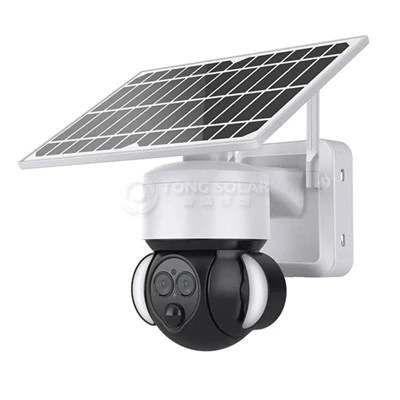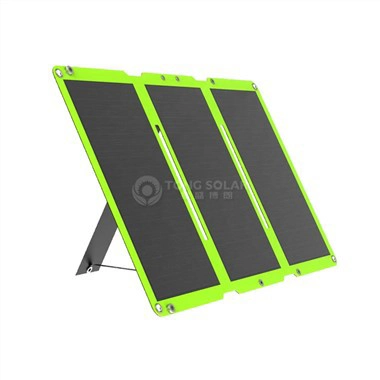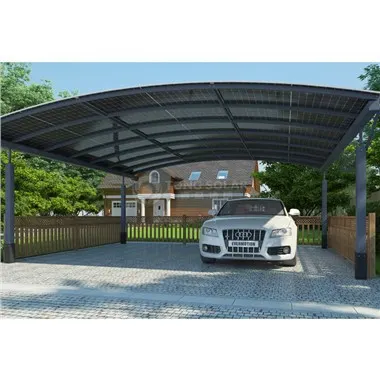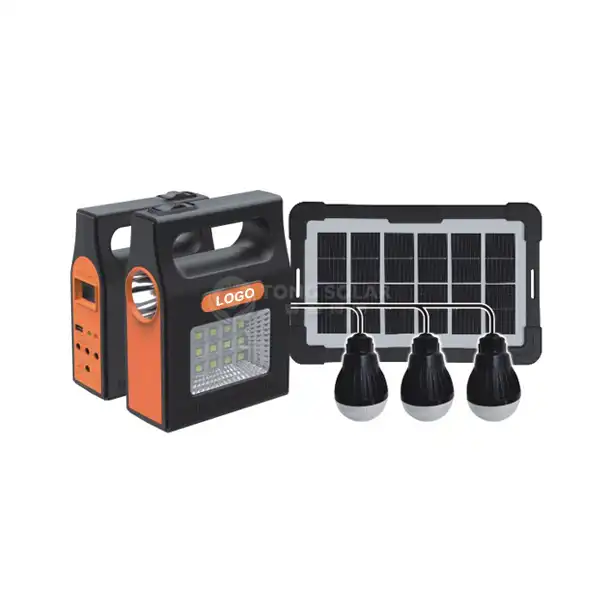Risen Energy Discusses Structural Changes, Supply Chain Risk And New Cell Technologies
2024-01-18 10:50:04
Risen Energy was landed a US$700 million private placement to support an acceleration in construction of its n-type capacity facilities.

In the first half of 2022, Risen Energy’s revenue and profitability both increased significantly. The company’s revenue reached RMB12.615 billion (US$1.77 billion), up by 51.29% year-on-year (YoY), and net profit attributable to its parent company was RMB505 million (US$70.7 million), up by 653.56% YoY.
As of mid-2022, Risen Energy has 15GW of cell capacity and 22.1GW of module capacity, spread across its Chinese sites in Chuzhou, Jintan, Yiwu and Ningbo, plus Malaysia.
At the same time, its 5GW n-type ultra-low carbon high-efficiency heterojunction cell and 10GW high-efficiency module projects in Ninghai have also entered the construction phase, and are expected to commence production in April 2023.
In September, Risen was granted a RMB5 billion (US$700 million) private placement, to support an acceleration in construction of its n-type capacity facilities.
Following the publication of its Q1 report, Risen’s president Sun Yuemao sat down with PV Tech to discuss a range of topics, including structural changes in the company, supply chain strategies and new cell technologies. At that time, Risen had just undergone a series of internal changes, while also announcing several areas of achievement.
The following dialogue from the interview has been edited for publication purposes.
Behind Risen Energy’s structural changes
PV Tech: Did Risen Energy’s H1 performance meet management’s expectations? What did you find most satisfying about it?
Sun Yuemao: Yes, the performance lived up to our expectations, but we have to keep going. First of all, we have managed to control our costs across the board, reaching a good level in the industry. Secondly, we have further adjusted our organisational structure, setting up several new management platforms, strengthening collaboration among departments and improving our operational and product strategy.
PV Tech: What specific efforts do you think contributed to the company’s achievements?
Sun Yuemao: For over a year of internal change and adjustment, the whole team worked extremely hard. We have also further strengthened areas such as process management and this is a discipline in which we must continue to do well.
PV Tech: One year ago, Risen Energy implemented an internal transformation strategy. What do you think the impact of this transformation has been on the company? What has been the biggest change so far?
Sun Yuemao: The first thing is that our management costs have been significantly reduced in areas such as communication, risk prevention, pricing mechanisms, profit forecasting and corporate capital control costs. The second involves decision-making mechanisms, where we have adjusted the organisational platform. For example, there are now discussion platforms for products, technology research and development, talent retention, training and quality management. Our supply chain has also changed a lot, with some favourable adjustments in the past year.
Going forward, we will continue to make specific analysis according to the situation of the industry. Based on this, we will make decisions to avoid external fluctuations impacting the company. For example, we will adopt some hedging and protection mechanisms to ensure the stability of our profits.
The PV industry has changed rapidly, especially in recent years. Through this adjustment, our decision-making mechanism is more well-rounded, and we can adapt to external changes more quickly. It is then easier for us to find a foundation to ensure the survival of the company and avoid risks that may occur as a result of rapid development. The reforms have also had a significant impact on the company’s culture.
Compared with last year, Risen Energy’s scale and volume have increased roughly two-fold. Although there is still a gap compared with the top companies, our growth rate certainly reflects an improvement in our entire operational system.
Supply chain strategy and risks
PV Tech: Last year, prices in the PV industry fluctuated massively and this year the price of silicon is still rising sharply. We have noticed that Risen Energy is coping with these challenges better than before. What strategic changes have been made? What do you think of the supply and demand problem within the silicon sector?
Sun Yuemao: Polysilicon is a complex situation. There is the market factor. Cooperation is also very important. But the underlying problem is still supply and demand, which includes several links upstream of the silicon wafer sector – for example, raw materials, ingot pulling and slicing. A mismatch between supply and demand in any of the links will likely cause fluctuation in the pricing of raw materials.
We have taken several measures to mitigate these challenges. Firstly, we now have our own upstream silicon facility, giving us a degree of control over raw materials. Secondly, our analysis of the whole industry is very detailed, including operation rate, potential future release of new construction capacity and spontaneous factors that may cause temporary changes, such as power failure. We will adopt specific countermeasures, which are of course short-term. When we find that some capacity release or temporary factors may cause changes to overall supply and demand, we will adjust the inventory, either increasing or decreasing it, which will protect profits. We will adopt different measures for short and mid-term situations.
PV Tech: The solar industry is increasingly signing more long-term orders for silicon materials following the recent supply challenges. Does Risen Energy have more mid-to-long-term or short-term plans?
Sun Yuemao: It is hard to quantify them, but we have both mid-to-long-term plans and short-term plans. The short-term mechanism is more convenient. We will dynamically investigate and analyse the basic situation in the industry. This is relatively simple. However, in the long run, there will be many variables affecting the future, including production capacity release, de-globalisation and overseas restrictions. We will take all these into account instead of just taking a general view.
PV Tech: Will Risen Energy further expand its upstream operations?
Sun Yuemao: Our current plan for the raw material sector involves a 200,000 tonne silicon metal project in Inner Mongolia, which is being pushed forward with the support of the government. Of course, we will consider other solutions according to the situation, including a potential overseas facility.
Standing by HJT
PV Tech: In addition to upstream and overseas facilities, what other plans are on Risen Energy’s radar?
Sun Yuemao: Our future positioning is to be a leading company focusing on HJT technology. At present, our HJT products have entered a relatively mature stage with actual projects going on. They have been officially put into production.
We have also entered the final stage for our self-developed equipment and materials. We have great confidence in our HJT products, including the technology used, LCOE and initial investment costs. We believe that our HJT products will be well developed in the next year.
PV Tech: You just mentioned HJT. At present, a number of companies have their own focus on next generation n-type technology. In your view, what are the advantages of HJT?
Sun Yuemao: In the past year, I was mainly in charge of our team’s HJT R&D. We targeted the weakest points of HJT technology and came up with solutions. So far, we have overcome all problems, including the cost issues I mentioned earlier. Our most significant achievement is that we have now entered a stage where we are capable of mass production, which is a great help in reducing costs and our carbon footprint.
We have also modified our module welding technology through adjustments carried out with our equipment suppliers. We have now entered a mature stage for mass production and are also working with a material supplier on in-depth research and development, which is delivering positive results. In short, I think that HJT has considerable advantages for future applications.
From 2020 to 2021, Risen was in a leading position in the industry for HJT output. Now, we are preparing for mass production, including enhancing some earlier products and carrying out reliability tests, all of which will enable us to have gigawatt levels of production when the project is completed.
PV Tech: Risen has already shipped some HJT products to overseas projects this year. Can you go into the sales and shipment performance of the company’s HJT modules?
Sun Yuemao: Previously, production was not large so the shipment volume was minimal. However, many customers have expressed particular interest in our HJT products. We have worked with some key customers on our existing production capacity. The feedback was positive, but we were running out of supply. We are very confident of our mass production capabilities in the future and will release capacity as soon as possible. Our key production bases are also well under way with the help of the government. We expect a big capacity release, literally the largest in the industry, and this will take place next year.
PV Tech: Now that October is here, what will be the focus for Risen for the rest of the year? What are the company’s expectations for this and next year?
Sun Yuemao: I think next year will be a big year for us. With a gradual improvement in funding support, HJT will show an advantage and we will continue to restructure ourselves internally. Transformation does not happen overnight, after all.
There will be some challenges, as international politics and the economic situation are constantly changing, but my confidence comes from the progress of the whole company in the past year. Our set up for next year is ready, including technology, production capacity and products, and we will follow our current schedule until we are capable of our big moves next year.
PV Tech: Can you be specific about what you can achieve?
Sun Yuemao: Our future capacity will be dominated by HJT products. We will go all out for more capacity and ranking for next year, ideally top five.
We have more changes to make in terms of profits than we have now, and we are also making further adjustments to our product strengths and market analysis. With competitive products and effective marketing and sales strategies, we are confident that we can remain profitable, even in the face of supply chain instability and market changes.
PV Tech: The gap between the top four companies and the rest has gradually widened in terms of both capacity volume and module shipment scale. How is Risen planning to respond?
Sun Yuemao: I think every company has its own characteristics. After the restructure, our foundation is becoming more solid. I have also worked in two of the excellent companies you have mentioned. When the overall foundation is solid, I believe that speed of expansion can be maintained. Of course, it will not be a simple expansion of production, but the premise is that we must have excellent products.
Our HJT and steel frame modules have entered a mature stage. Going forward, with the right products, clear management decisions and supply chain strategies, as well as an appropriate response to international trends, we can reduce the risks. We are now more recognized in the capital market and, with significant funding, we will develop rapidly and catch up with the market share of the top four companies.
PV Tech: The debate about n-type HJT and TOPCon technology is still quite fierce in the industry. How do you view the competition between the two?
Sun Yuemao: TOPCon is an extended product, which shares the same lineage with the mono PERC series. HJT, on the other hand, has a completely different technical route, with advantages in terms of cost and low carbon emissions and potential for further enhancement.
HJT has advantages in power with very good future potential. In addition, in some parts of the world we can achieve a reduction of 7% in LCOE, based on precise calculation of latitude, temperature and related parameters. I think that, for many countries and regions, especially those prioritising energy security, it is a very attractive proposition.
Each technology has its own characteristics and we always aim to provide our customers with a cost-effective product. Especially now, under the current international economic trend and in the face of rising global interest rates, they pay a lot of attention to the return on investment of their assets.
In the future, products will be left to market evaluation but, based on our comprehensive analysis, we believe that HJT will gradually become more advantageous as all links of the supply chain mature.







